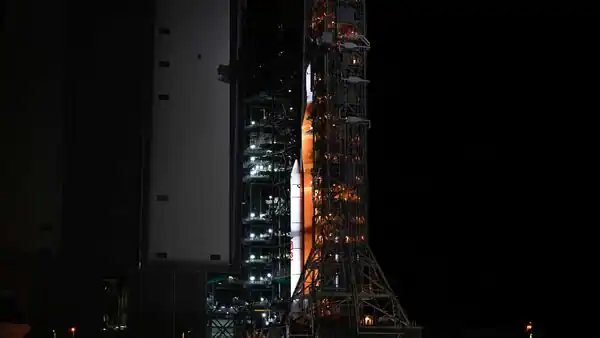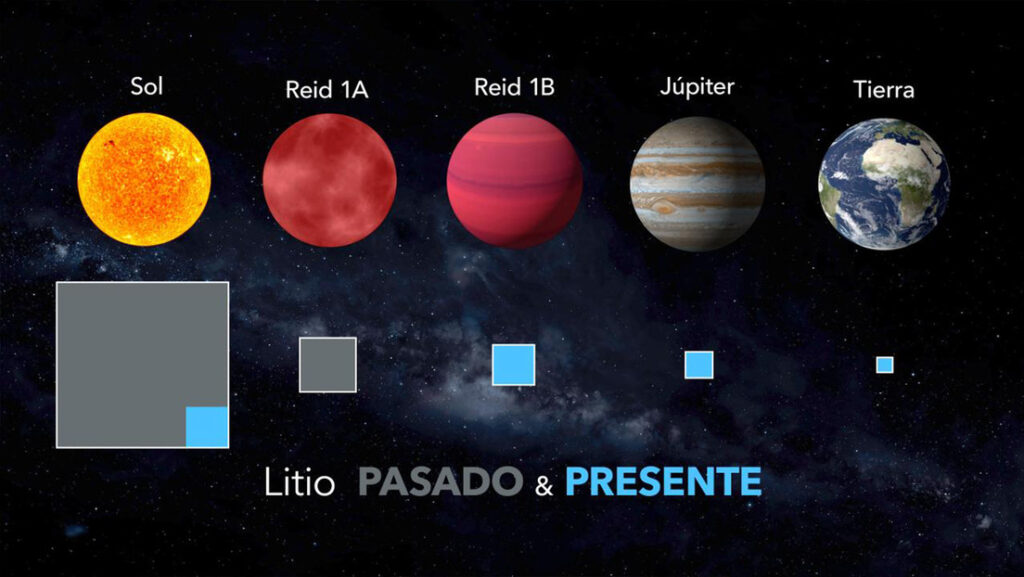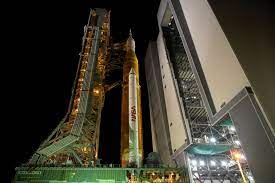
Artemis I will be an uncrewed flight test to send Orion around the Moon and back to Earth over a six-week mission to check out systems before crew fly aboard on Artemis II.
NASA’s gigantic Space Launch System (SLS) moon rocket, topped with an uncrewed astronaut capsule, began an hours-long crawl to its launchpad Tuesday night ahead of the behemoth’s debut test flight this month.
Artemis I will be an uncrewed flight test to send Orion around the Moon and back to Earth over a six-week mission to check out systems before crew fly aboard on Artemis II.
Through Artemis missions, NASA will land the first woman and the first person of color on the Moon, paving the way for a long-term lunar presence and serving as a steppingstone to send astronauts to Mars, NASA said.
The 322-foot-tall (98-meter) rocket is scheduled to embark on its first mission to space – without any humans on August 29. It will be a crucial, long-delayed demonstration trip to the moon for NASA’s Artemis program, the United States’ multibillion-dollar effort to return humans to the lunar surface as practice for future missions to Mars.
Artemis 1, an uncrewed test flight, will feature the first blastoff of the massive SLS rocket, which will be the most powerful in the world when it goes into operation.
The Space Launch System, whose development during the past decade has been led by Boeing Co, emerged from its assembly building at NASA’s Kennedy Space Center in Florida about 10 pm EDT (0200 GMT) on Tuesday and began a four-mile (6-kilometer) trek to its launchpad.
Moving less than 1mph (1.6kph), the rollout will take roughly 11 hours.
Sitting atop the rocket is NASA’s Orion astronaut capsule, built by Lockheed Martin Corp. It is designed to separate from the rocket in space, ferry humans toward the moon and rendezvous with a separate spacecraft that will take astronauts to the lunar surface.
For the August 29 mission, called Artemis 1, the Orion capsule will launch atop the Space Launch System without any humans and orbit the moon before returning to Earth for an ocean splashdown 42 days later.
If bad launch weather or a minor technical issue triggers a delay on August 29, the National Aeronautics and Space Administration has backup launch dates on 2 and 5 September.
Recent Posts
- Astronomers detect first direct image of black hole expelling a powerful jet
- WhatsApp rolling out ‘reply with message’ feature within call notifications
- Multi-Device Pairing May Be Arriving for Apple Watch this Year
- Artificial Intelligence Discovers Hidden Giant, a Planet 5 Times Larger Than Jupiter
- Google CEO Sundar Pichai Talks Bard & The Future Of Search
Recent Comments

Astronomers detect first direct image of black hole expelling a powerful jet

Artificial Intelligence Discovers Hidden Giant, a Planet 5 Times Larger Than Jupiter

Scientists explain melting of Antarctic ice sheet dating back 9,000 years

An Unexpected Discovery: Hubble, ESA's Gaia Spot Double Quasar That Existed Over 10 Billion Years Ago

Astronomers detect first direct image of black hole expelling a powerful jet

WhatsApp rolling out ‘reply with message’ feature within call notifications

Multi-Device Pairing May Be Arriving for Apple Watch this Year


